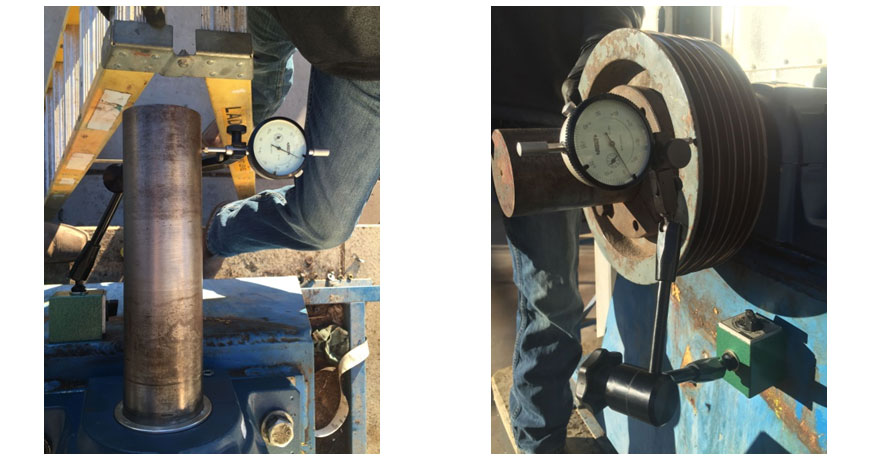Today’s advancements in technology have allowed many maintenance tasks to be performed more easily and efficiently. Such is the case with using a laser alignment system to accomplish sheave/pulley alignment. However, prior to setting up the laser system to perform the alignment, one important and often overlooked step is to measure and correct sheave run-out. Run-out refers to the situation when an object does not rotate exactly in the plane of the main axis of rotation. If not corrected, sheave run-out can cause a “rubber band effect” where the belt will become slack at one end while the other end quickly snaps into tension. Over time this repetition of the belt going slack and then tightening will wear out the belt as well as the bearings and cause premature failure.
Run-out for sheaves can occur in two forms, radial (rim) and axial (face), and both need to be set within tolerance before performing the final alignment. The typical tolerance for radial run-out should not exceed 5 mils total indicated reading (T.I.R.) for high-speed sheaves (RPM of 1800 or greater) and no more than 10 mils for slower speed sheaves. The tolerance for axial run-out is no more than 0.5 mils T.I.R. per inch of sheave diameter for high-speed sheaves and no more than 1 mil per inch for slow-speed sheaves.

Start by checking for radial run-out. If excessive run-out is measured, check if any shaft run-out is present. If shaft run-out is detected, the shaft may be bent which would require replacing the shaft before measuring for radial run-out on the sheave again. If no run-out was detected for the shaft, replace the sheave instead. Additionally, if the sheave is mounted on a tapered bushing, inspect and thoroughly clean both the inside and outside of the bushing to ensure the sheave is seated properly. Once the radial run-out is within tolerance, check for any axial run-out (or wobble) of the sheave. If axial run-out is measured, correct it by repositioning the sheave on the shaft. Once both types of run-out are within tolerance, install the new belts and perform the alignment.
If you’re looking for more information regarding pulley alignment, download our 5-Step Sheave/Pulley Alignment Procedure for a detailed breakdown of all the steps involved in good Sheave Alignment.
Filed under:
Alignment by Tim Rogers CRL
